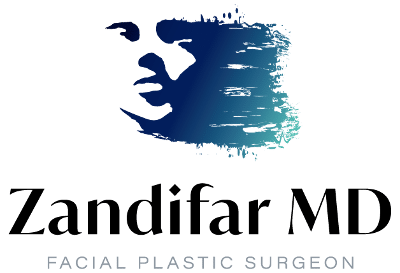When it comes to facial aesthetics, balance often speaks louder than individual features. You might not notice it right away, but the most harmonious faces usually follow certain proportional guidelines that create symmetry and visual appeal. At ZandifarMD.com, Dr. Hootan Zandifar, a double board-certified facial plastic surgeon, approaches each patient with a deep understanding of facial proportions to guide ideal, customized aesthetic enhancements.
This blog explores how your natural facial structure influences your aesthetic potential—and how expert insight helps bring out your best look without sacrificing individuality.
Why Facial Proportions Matter
Facial beauty is not defined by isolated features but by the relationship between them. The distance between your eyes, the angle of your jaw, the projection of your nose—all contribute to the impression your face makes. When these elements work together in harmony, the result is a face that feels balanced, natural, and pleasing to the eye.
For many patients, enhancing proportions isn’t about making drastic changes—it’s about subtle refinements that restore symmetry or bring features into better alignment. Dr. Zandifar uses facial mapping and artistic precision to assess how each component contributes to your overall appearance before recommending enhancements.
Understanding the “Rule of Thirds” in Facial Aesthetics
Facial proportion is often assessed using the “rule of thirds,” which divides the face horizontally into three equal zones:
- Upper third: From the hairline to the brow
- Middle third: From the brow to the base of the nose
- Lower third: From the base of the nose to the chin
When one area dominates or is underdeveloped, the entire face may appear imbalanced. For example, a short chin can make the nose seem more prominent, while a low-set brow can add heaviness to the upper face.
Dr. Zandifar carefully evaluates these proportions in every consultation to determine whether surgical or non-surgical adjustments can help restore visual harmony.
Horizontal Symmetry and the Face’s Vertical Balance
Beyond horizontal thirds, the face is also measured vertically for symmetry and proportional spacing. Ideal aesthetic balance often includes:
- Equal width across the eyes and base of the nose
- Even spacing between features
- Consistency from left to right
Most faces are naturally asymmetrical to some degree, and that’s completely normal. However, when an imbalance begins to draw unwanted attention—such as a crooked nose or uneven cheeks—enhancements can help subtly correct the disharmony while preserving what makes your face unique.
How Facial Proportions Guide Enhancements
Rhinoplasty and Profile Refinement
The nose is often the centerpiece of facial proportions. A nose that’s too large, wide, or asymmetric can disrupt balance between the eyes, lips, and chin. Many patients seek rhinoplasty not to create a “perfect” nose, but to bring their features into better proportion.
By using side-profile imaging and front-facing evaluations, Dr. Zandifar creates custom rhinoplasty plans that refine nasal contours while preserving ethnic identity and facial character.
Chin and Jawline Balance
A small or recessed chin can dramatically affect facial harmony. It may exaggerate the nose, reduce jaw definition, or throw off lower-face balance. For these patients, chin augmentation—either with a surgical implant or dermal filler—can restore proportion and elevate confidence.
In men, enhancing the chin and jawline often creates a stronger, more structured appearance. In women, contouring can help soften or refine the lower face.
Cheek Contour and Midface Support
As we age, volume in the midface begins to diminish, leading to flattened cheeks and a drawn appearance. This not only affects facial vitality but also disrupts the vertical harmony between the cheeks and lower jaw.
Cheek enhancement with dermal fillers can restore youthful curves and lift sagging areas, improving both side and front-facing balance. Dr. Zandifar maps each patient’s facial volume loss individually, creating a filler plan that restores contour without appearing overfilled or artificial.
Non-Surgical Enhancements and Their Role in Proportional Harmony
Today’s aesthetic enhancements are not limited to surgery. Many patients benefit from non-invasive treatments that restore balance without downtime. At ZandifarMD, these options include:
- Botox® to relax muscles and reduce dynamic imbalances (like brow asymmetry)
- Fillers to refine the jawline, lips, or nose subtly
- Laser treatments to improve skin tone, which enhances the clarity and visual symmetry of the face
These treatments are particularly useful for patients looking for maintenance or minor refinements to enhance facial proportion without altering their core features.
Facial Proportions in Gender-Affirming Aesthetics
Gender-specific facial characteristics are often defined by proportional differences. For example, masculine features typically include a wider jaw, stronger chin, and flatter cheeks, while feminine features may emphasize higher cheekbones, a narrower nose, and a more tapered lower face.
For transgender and nonbinary patients seeking facial gender affirmation, proportion becomes central to the aesthetic process. Dr. Zandifar’s expertise in gender-conscious facial surgery allows him to make thoughtful, respectful adjustments that reflect each patient’s desired identity.
The Art and Science Behind Expert Analysis
Facial aesthetic planning requires more than technical skill—it demands artistic vision. It’s not about chasing perfection, but about helping patients feel more aligned with how they want to look. Dr. Zandifar takes time to study each patient’s unique structure and personality before recommending any treatment.
By focusing on proportion and harmony rather than isolated changes, he ensures enhancements feel organic, never overdone.
Conclusion: Personalized Enhancements Begin with Proportional Insight
Your face is not a collection of separate features—it’s a balanced, expressive whole. Understanding your facial proportions is the first step toward choosing the right enhancements to reveal your best self. Whether you’re considering surgery, non-invasive procedures, or simply curious about your options, an expert facial analysis provides a powerful foundation.
At ZandifarMD.com, Dr. Hootan Zandifar is committed to helping patients achieve natural, proportional results that reflect who they are—not someone else’s idea of beauty. With experience, precision, and artistry, Dr. Zandifar creates aesthetic plans that prioritize facial harmony and long-term satisfaction.
Ready to explore what your proportions reveal about your aesthetic potential?
Schedule your personalized consultation with Dr. Zandifar today and take the first step toward a confident, balanced, and beautifully refined appearance.

